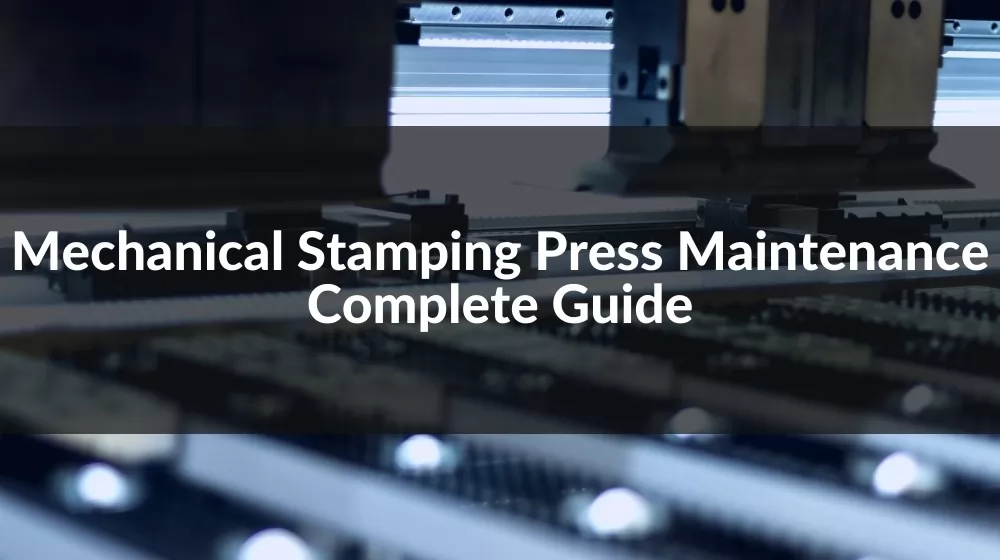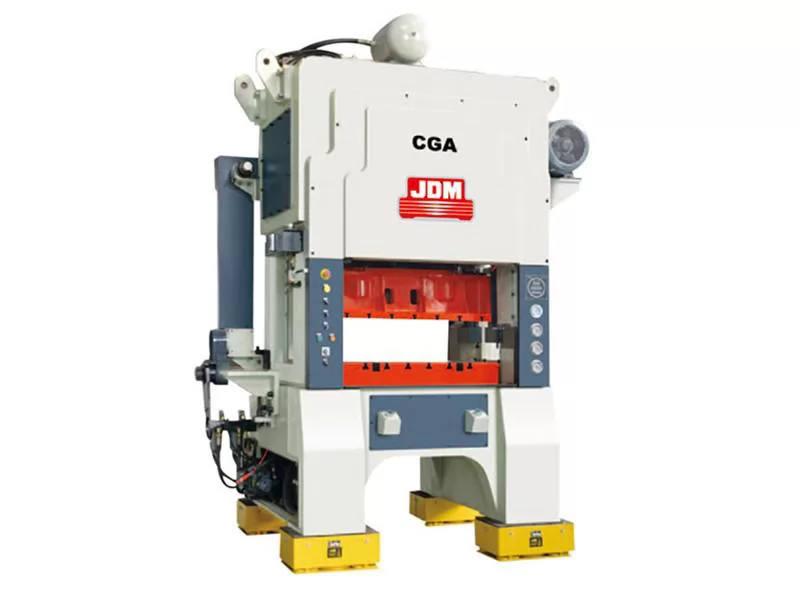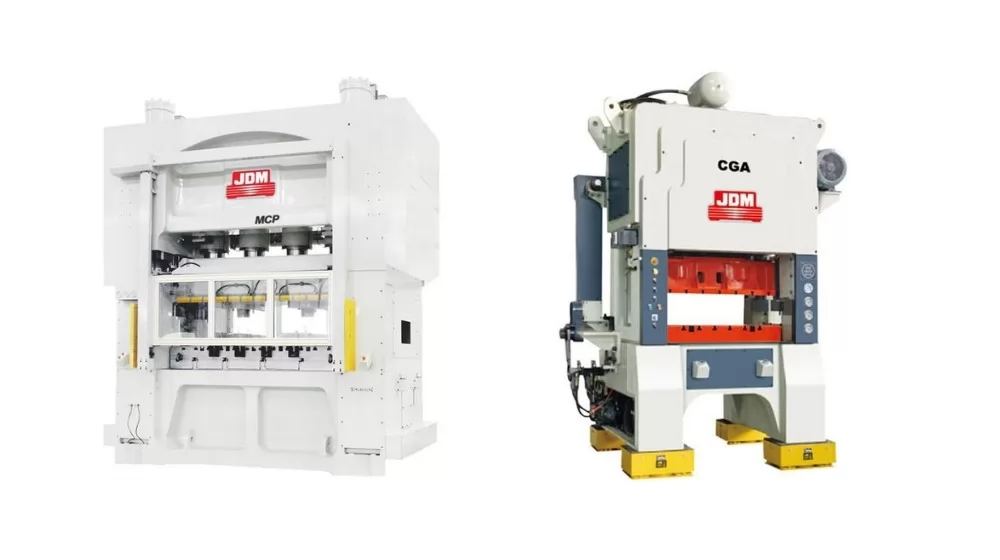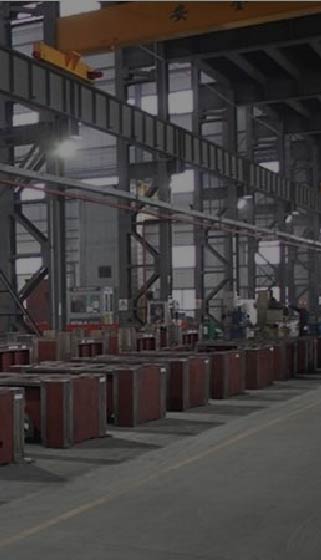








The mechanical stamping press is a common type of machinery used in the forging and pressing industry. For the production of a company, regular maintenance and servicing of the mechanical stamping press while it is in progress is an important means of saving costs. Therefore, understanding and implementing proper mechanical stamping press repair and maintenance procedures is a must for every production and technical team. This article will take you through the key points of mechanical stamping press maintenance and servicing.
A mechanical stamping press is a forging machine driven by a crank linkage or elbow rod mechanism, a cam mechanism, or a screw mechanism, and is used to press materials into parts by applying strong pressure to the billet to deform and fracture it. Smooth work, high working accuracy, good operating conditions, high productivity, easy to realize mechanization, automation, suitable for working in automatic line, widely used in automobile, shipbuilding and other industries.
When mechanical stamping press works, the motor drives the big belt pulley (usually used as flywheel) through the v-belt, and then drives the crank slider mechanism through the gear and clutch to make the slider and the convex die go down in a straight line. When the forging work is completed, the slider returns to the upper line and the clutch is automatically disengaged, while the brake on the crank shaft is applied to stop the slider near the upper stop.
Presses are mainly used in processes such as cutting, punching, dropping, bending, riveting and forming. By applying strong pressure to a metal blank, the metal is plastically deformed and fractured to produce a part.
Mechanical stamping press is generally distinguished by the body structure type and application characteristics.
According to the body structure type: there are open and closed two types.
The most widely used. Open type presses are mostly vertical. The body is C-shaped, the front, left and right side open, simple structure, easy to operate, the body can be tilted to a certain angle, so that the workpiece slides down into the hopper, easy to achieve automation. But the open body rigidity is poor, affecting the accuracy of the parts and die life, only for 40 ~ 4000 kN of small and medium-sized presses.
The body is H-shaped, the front and rear of the body open, good rigidity, high precision, the size of the table is larger, suitable for pressing large parts, nominal working force of 1600 ~ 60000 kN. Cold extrusion, hot die forging and double-action deep drawing and other heavy presses use closed body.
According to the application characteristics: there are double-action deep drawing press, multi-station automatic press, rotary head press, hot die forging press and cold extrusion press.

The mechanical stamping press should be maintained in a standard way during daily use.
Before each shift to operate the manipulator points of the brake shaft filled with lubricant, clutch parts once a day with oil pressure lubrication. Clean the machine before stopping each shift.
The mechanical stamping press is inspected in all aspects. Check the fasteners and make up the missing external parts; check the clutch, spring and belt; check the lubricating device of the machine; check the damage and aging of the electric circuit, whether the motor and solenoid are normal; check the accuracy and wear of the crankshaft guide; check the brake, clutch, slider, closing block and closing ring; check the electrical control part; check and adjust the body table coupling bolts.
According to the different types of presses and processing requirements, the development of targeted, practical safety operating procedures, and the necessary job training and safety education. The use of units and operators must strictly comply with the provisions of the design and manufacturing unit to provide safety instructions and operating procedures, the correct use, maintenance.
Pay attention to safety during maintenance to ensure that the locking and opening process is performed correctly to ensure the safety of maintenance personnel and that the sleeve is placed at the bottom of the stroke before performing maintenance work on the brake. If this is done, there is no need to lock the sleeve.
Shop environment control. A clean pressure machine allows the operator or maintenance personnel to detect problems as soon as they occur. For example, if the press is clean, it is easy to identify the location of oil leaks, air leaks, breaks, etc.
Make sure the mechanical stamping press is in a balanced position. A precisely balanced press will work better, so it is best to have it inspected once a year. Pneumatic systems, which operate the pneumatic brakes and balancing systems, need to be checked for gas leaks because improper air pressure can affect the performance of the brakes and balancing systems, and they control the stopping time of the press, which can put the operator and the equipment in danger if problems occur. In addition, all pneumatic systems have regulators, lubricators and water reservoirs. Water that accumulates in the gas lines should be removed daily.
Replace lubricants and screens at regular intervals. Improper maintenance of the press lubrication system is also one of the main reasons for press downtime. For a number of reasons, many press operators do not change the screens regularly when operating circulating oil systems equipped with screens. Be sure to change the screen at the same time as you change the oil, and change it frequently in general.

Precautions before and after starting the mechanical stamping press
Check the safety conditions around, in front of and behind the machine, and up and down before starting the machine.
Check the air circuit, oil circuit, electric circuit and whether it is normal.
Turn on the power supply to check whether the air supply, oil supply, hydraulic overload protection is normal, check the pressure of each pressure gauge, electrical indicators are in the normal state.
Start, while observing the start electrical status and machine tool mechanical status.
First put the machine tool in the inching position pointing start a turn while observing the machine tool state is normal such as: transmission, slider, balance cylinder, oil supply, etc..
The machine starts a single, continuous action, check the mechanical transmission, sound, current is normal.
Commissioning, test each machine performance such as: adjust the closed height, cam control angle, flywheel brake, air cushion, precision, moving the table, manual unloading, etc.
Continuous machine observation such as: whether the alarm, each drive and guide temperature changes, air pressure, sound, oil supply, oil circuit, etc.
Mechanical stamping press common fault analysis.
The shaft tile temperature rise is too high: If the press works normally or even empty when the crankshaft shaft tile temperature rise within a short period of time changes a lot, you need to consider whether the shaft tile clearance is too small, whether the shaft tile into impurities or foreign objects, whether poor lubrication, whether long-term overload in the overload load work.
The body vibration is large: the body vibration is too large will also bring many problems, resulting in a poor working environment, reduce the service life of the machine, forging precision decline, etc.. This situation requires checking whether the flywheel is badly balanced jumping too much, whether the crankshaft bearings are badly worn, whether the foot screws are loose, and whether the preload force of the tensioning bolts is sufficient.
The press even punch: press even punch is a very serious fault, first of all, we must exclude the press control program whether there is an error, check whether the cam switch signal failure, whether the clutch friction plate has fallen off causing the clutch can not be disengaged, the brake action failure does not brake, the clutch, brake intake and exhaust is smooth.
If the machine once a failure occurs, further analysis should be done according to the content to finally find the root cause of the problem. Through the timely and accurate judgment of the occurrence of the failure to deal with, in order to ensure the use of the press performance, and thus improve the reliability of equipment operation, life and efficiency.
The above is the mechanical stamping press maintenance and repair guide for you, I hope it will be helpful to you.
Feel free to visit our mechanical stamping press website and contact us to talk to our professional technical team.
More related questions
Principles of press type selection
The selection of mechanical stamping press type is based on the nature of the stamping process, the size of the production batch, the geometry and precision requirements of the stamped parts, etc. The general principles for selecting the type of mechanical stamping press are summarized as follows.
In the production of large and medium-sized stamping parts, closed mechanical stamping presses are mostly used, among which there are general-purpose presses for general use, as well as special extrusion presses and fine presses with small table surface and large rigidity. In the production of large deep drawing parts, double-action press can be used, the die structure is simple and easy to adjust.
The hydraulic press has no fixed stroke and will not be overloaded due to the change of the thickness of the sheet, so it has obvious advantages compared with mechanical stamping press when a large force stroke is needed. Friction presses are simple in structure, inexpensive and not easily damaged by overload, and are often used to complete stamping work such as bending. The stroke of the friction press is not fixed, so it is not affected by the fluctuation of the thickness of the plate in the leveling or shaping of the stamped parts, and it can maintain a relatively stable shaping accuracy. However, the number of strokes of the friction press is low, the productivity is low, and the operation is not convenient.
The mechanical stamping press with high accuracy and high stiffness should be used as much as possible for punching of thin plate parts; the mechanical stamping press for correction bending, leveling and shaping should have high stiffness to obtain high dimensional accuracy of the stamped parts.
It is worth pointing out that, although increasing the structural rigidity and transmission rigidity of mechanical stamping press can reduce the dimensional deviation of finished parts caused by fluctuation of plate performance, operation factors and instability of the previous process, etc., only high-precision plates with small thickness tolerance are suitable for mechanical stamping press with high precision and high rigidity. Otherwise, the fluctuation of plate thickness can cause the sharp increase of stamping deformation force, then, the excessive equipment steel degree is easy to cause the overload damage of the die or equipment.
Related Reading:






